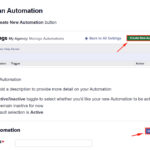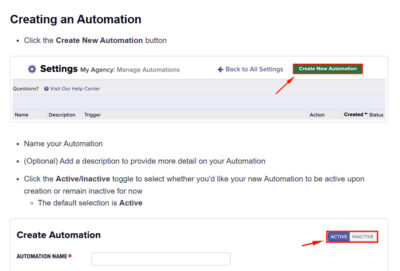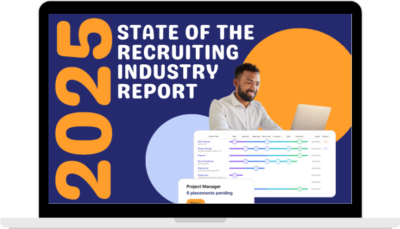(Editor’s note: The information from this article by Top Echelon Recruiting Software has been taken from an Expert Recruiter Coaching Series webinar by Gary Stauble of The Recruiting Lab titled, “The Retained Mindshift.” Click HERE to watch the video of that training webinar for free.)
There comes a moment in every recruiter’s career when the constant chasing, the ghosting clients, and the unpaid hours add up to one question: Is there a better way to do this?
For Gary Stauble, founder of The Recruiting Lab and seasoned industry coach, that moment came in the late 1990s. It was then that he made the leap from contingency to retained search—an evolution that didn’t just shift his revenue model but transformed his mindset, his client relationships, and his entire business experience.
In this article, Stauble will take readers on deep dive—not just into how to sell retainers, but into why it requires an internal rewiring. Because going retained isn’t just a business decision. It’s an identity shift.
“This isn’t just about learning the sales language,” Stauble said. “It’s about adopting the psychology of someone who leads, who owns the room, and who gets paid for their expertise.”
Why Make the Shift?
Before exploring how to make the transition, Stauble shared the pain points that drove him to consider retained search in the first place.
“I got tired of doing serious work for people who weren’t serious,” he recalled. “I’d pour my energy into a search, send over great candidates… and then the client would disappear. That kind of time leakage becomes intolerable.”
Sound familiar?
Contingency search often means working without commitment from the client. It creates an imbalance—one party takes all the risk, while the other takes their pick of outcomes. For Stauble, that imbalance hit a tipping point.
“How you spend your time is how you spend your life,” he said. “And I didn’t want to spend mine chasing people who weren’t invested.”
The decision to pivot toward retained wasn’t made lightly. In fact, Stauble paid another recruiter a commission just to teach him how to do it—because in the ’90s, this kind of knowledge wasn’t easy to find.
“Back then, it was a black box. There were no playbooks. I had to buy my way in.”
Contingency vs. Retained: Speed or Substance?
Stauble presented a powerful analogy that gets to the heart of the difference between contingency and retained search: Domino’s Pizza.
“In the ’80s, I delivered pizzas for Domino’s,” he shared. “They had a guarantee—30 minutes or it’s free. Their whole value prop was speed. The product? Meh. But they were fast.”
Contingency recruiting is like Domino’s. You’re fast, always hustling, hoping to be the first one in the door. But that speed often comes at the cost of quality, control, and client commitment.
Retained search flips the script.
“I didn’t want to stay on top of everything. I wanted to get to the bottom of things,” Stauble said. “Retained work lets you go deeper. It’s less about reacting and more about solving.”
The shift from speed to process—from volume to value—isn’t just professional. It’s personal.
The Payoff: What Changes When You Go Retained
Once Stauble embraced retained work, the transformation was immediate and powerful. Here’s what changed:
1. Higher-Caliber Searches
Retained clients trusted him with leadership roles—executive directors, CFOs, IT heads. These searches came with real influence, real urgency, and real stakes.
“I wasn’t chasing low-level roles anymore. These were mission-critical hires.”
2. Better Fees
Naturally, the fees increased. But it wasn’t just about bigger checks—it was about more predictable revenue.
“With contingency, you’re constantly on edge. With retainers, money’s flowing in. I could plan. I could invest.”
3. Easier Sourcing
Leadership candidates are easier to identify. They’re visible, known, often listed on org charts. It wasn’t a needle-in-a-haystack game anymore.
“I could call a firm and say, ‘Who’s your controller?’ With a couple of calls, I had names.”
4. Stronger Business Infrastructure
With consistent revenue, Stauble hired more researchers, expanded his team, and formalized operations.
“Retainers gave me the financial confidence to grow.”
5. More Enjoyment
He simply liked the work more.
“Retained search let me slow down and be more thoughtful. The relationships were better, the conversations deeper.”
The Mystique—and the Reality—of Retained Search
There’s long been a mystique surrounding retained search. It feels exclusive, elite, even secretive. And to an extent, that’s by design.
“There’s a reason it feels like a closed club,” Stauble said. “Because you’re not just selling a candidate—you’re selling an invisible promise.”
In contingency, clients pay for a result: a hire. In retained, they pay for a process—one they can’t see and don’t fully understand. And that can make the sales conversation tricky.
“You’re asking someone to pay you upfront, sight unseen. That’s not easy. But if you learn how to sell the process—if you make the invisible visible—it’s a game changer.”
Stauble made one of his most powerful distinctions here:
“A retained recruiter is like a management consultant who specializes in search. A contingency recruiter is more like a salesperson.”
That framing changes everything. It affects how you present yourself, how you interact with clients, and what they expect from you. It also leads directly into the core of the “mindshift.”
The True Shift Is Internal
This isn’t just about new scripts or contracts. The real shift is psychological.
“The biggest change is internal,” Stauble said. “If you don’t believe you’re on equal footing with the client, they won’t either.”
Too many recruiters subconsciously see their clients as superiors. They defer, they apologize, they shrink. And it shows.
“If you walk into a conversation like you’re beneath them, you’ve already lost the sale.”
The cure? Shift how you see yourself.
Stauble advises cultivating a consultant mindset—someone who is brought in for their expertise, not someone begging for job orders. That shift in posture affects your tone, your confidence, and ultimately your outcomes.
Aim for Excellence—Not Approval
One of Stauble’s most important points is about standards.
“Make excellence your personal standard. Not approval. Not speed. Not being liked.”
He warned against the approval trap, especially in contingency, where recruiters often feel like they’re competing in a beauty contest, vying for the client’s affection alongside four other firms.
“Excellence isn’t about the client liking you. It’s about being worthy of trust, worthy of respect—and delivering on your word.”
Excellence also takes the focus off your ego and puts it back on the work.
“I don’t chase revenue anymore. I chase excellence. And the revenue follows.”
Your Self-Image Drives Your Success
Stauble delivered one of his most striking insights late in the session:
“Nothing impacts your performance more than how you feel about yourself.”
That’s not fluff. It’s neuroscience. Your tone, your pitch, your presence—it all flows from self-image. If you believe you’re an imposter, it will leak into everything you do.
The Imposter Syndrome
Defined as the belief that if people really knew who I was, they’d reject me, imposter syndrome hits 70–80% of professionals—especially high achievers.
“The more accomplished you are, the more likely you are to struggle with it,” Stauble said.
It triggers your sympathetic nervous system—fight or flight—and shuts down your creativity, memory, and presence. Not ideal when you’re pitching a retainer to a CEO.
How to Dismantle Imposter Syndrome
Stauble offered two powerful ways to fight back:
1. De-Stigmatize It
You’re not broken. You’re normal.
“The day I learned it had a name was a relief. I realized I wasn’t alone.”
Understanding the universality of imposter syndrome takes away its power. It’s just noise in your brain—not a truth about who you are.
2. Practice Discomfort
Stauble practices Brazilian jiu-jitsu and kickboxing. “I’ve got a black eye right now,” he laughed. “When you deal with physical discomfort daily, pitching a retainer doesn’t seem so scary.”
His advice? Do something uncomfortable every day. Give a speech. Ask for a bigger fee. Embrace awkward silence. Little by little, you rewire your brain for courage.
“Voluntary hardship is anti-venom for fear. You expose yourself to discomfort in controlled doses—and it builds resilience.”
Selling with Authority: Seven Charisma Levers
Stauble shared seven simple ways to project confidence and charisma during client calls:
-
Slow Your Speech – Speed signals nerves. Slowing down creates gravitas.
-
Pause Frequently – Silence makes your words more powerful.
-
Drop Your Intonation – End sentences with authority, not a question mark.
-
Breathe Deeply – Belly breathing calms the nervous system.
-
Use Vocal Variety – Monotone equals boring. Mix it up.
-
Be Present – Multitasking kills charisma. Focus fully.
-
Take Up Space – Your body language affects how you feel—and how others see you.
“You don’t need to be born charismatic,” Stauble said. “You can engineer it with small adjustments.”
Final Thoughts: The First Step Is Courage
Making the shift to retained work is not just about pricing models or contracts. It’s about seeing yourself differently—and having the courage to act before you feel fully ready.
“The first step to being courageous,” Stauble reminded us, “is being willing to look foolish.”
Retained work isn’t for everyone. But for those ready to claim their expertise, value their time, and engage as peers—not subordinates—the shift can be life-changing.
Key Takeaways:
-
Stop selling speed. Start selling depth.
-
Charge for the process, not just the product.
-
See yourself as a consultant, not a vendor.
-
Practice discomfort daily to grow confidence.
-
Use tone, pace, and presence to boost charisma.
-
Treat excellence—not approval—as your standard.
-
And above all, see your clients as peers.
The future of recruitment belongs to those willing to lead. And leadership starts with a shift—not just in strategy, but in self-image.









